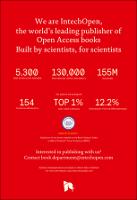Chapter Automation of the Expertise of the Roman Mosaic Arts in Constanta: Analytical and Statistical Models for a Fuzzy Inference-Based System
Author(s)
Ţurcanu-Caruțiu, Daniela
Ioniță, Silviu
Language
EnglishAbstract
The biggest problem faced by the specialists in the field of cultural heritage is the identification of the original elements for their separation from the large mass of the mosaic components that come from completions of the different restoration works. This chapter deals with analytical models for statistical evaluation of the morphological and chromatic characteristics that represent suitable metrics for making decisions in the field of cultural heritage. A classifier model based on fuzzy logical inference, which integrates discrete and statistical characteristics of the mosaic components, is presented. The classification will be done in a space of conventional measures (metrics) for identifying and separating the mosaic components. The exemplification of the method is made on the Roman Mosaic of Constanta, a historical monument that is currently in an advanced stage of deterioration and which requires urgent restoration-conservation interventions. This artifact dates from the third or fourth century, (possibly under the emperor Constantine the Great, 306–337); it is a pavement that has decorative elements specific to this marine area, part of a large construction that took place, in antiquity on three terraces, located on the Black Sea on the docks of the old Port Tomis.
Keywords
automatic reasoning, expertise, mosaic artifacts, artificial intelligenceDOI
10.5772/intechopen.92679Publisher
InTechOpenPublisher website
https://www.intechopen.com/Publication date and place
2020Classification
Social and cultural history


 Download
Download